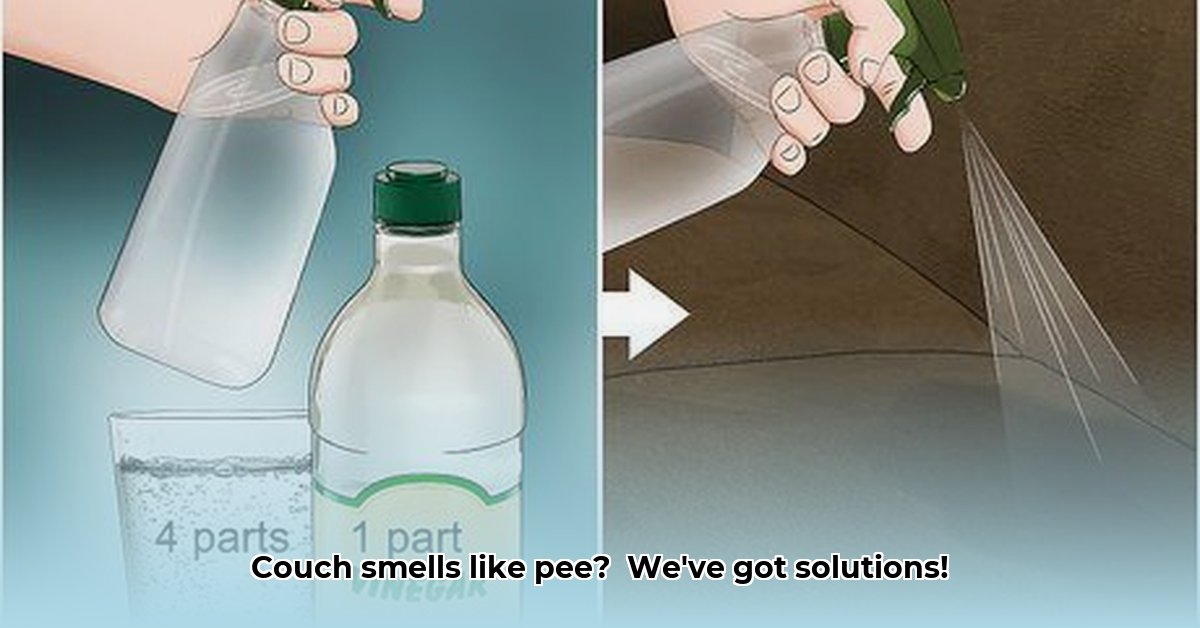Effective Odor Removal Techniques for Fresh Accidents
Discovering a fresh urine stain on your couch can be frustrating, but swift action is key to preventing lingering odors. Understanding your couch’s fabric and utilizing the right cleaning solutions will make all the difference in restoring its freshness. For mattress stains, see our guide on mattress urine stain removal.
-
Immediate Blot & Rinse (If Applicable): Time is of the essence. Blot the affected area immediately with clean, absorbent paper towels or a white cloth, applying gentle pressure to absorb as much urine as possible. Avoid rubbing, which can spread the stain. If your couch’s care tag (check for W or WS codes) allows, rinse the area with cold water by blotting with a damp cloth.
-
Identify Fabric Type & Cleaning Code: Before applying any cleaning solution, check your couch’s care tag. The cleaning code (W, S, WS, or X) indicates the appropriate cleaning methods for your specific fabric. Using the wrong solution can damage the material. “W” means water-based cleaners are safe, “S” indicates solvent-based cleaners, “WS” allows both, and “X” means vacuuming only.
-
Enzyme Cleaners: Your First Line of Defense: Enzyme cleaners are specifically designed to break down the organic compounds in urine that cause the unpleasant odor. After blotting and rinsing (if applicable), apply an enzyme cleaner liberally to the affected area, following the manufacturer’s instructions. Allow the cleaner to sit for the recommended time to effectively neutralize the odor.
-
Vinegar & Baking Soda Solution (Optional): For added odor absorption, consider a vinegar and baking soda solution after the enzyme cleaner. Mix equal parts white vinegar and water in a spray bottle and lightly mist the area. Sprinkle baking soda generously over the damp spot and let it sit for several hours or overnight. Vacuum thoroughly in the morning.
Tackling Stubborn, Set-In Urine Stains and Odors
Older urine stains, especially those that have dried, require a more intensive approach. Combining different cleaning methods and seeking professional help when necessary can conquer even the most persistent odors.
-
Repeat Enzyme Cleaner Application: For set-in stains, repeat the enzyme cleaner application multiple times, allowing ample dwell time between each application. The enzymes need time to penetrate the fabric and break down the residual urine.
-
Enhanced Vinegar and Baking Soda Treatment: Create a paste of baking soda and water (enough to cover the stain) and add a few drops of dish soap. Apply the paste to the affected area after the enzyme cleaner. Let it dry completely, then vacuum thoroughly to remove residue. This helps lift any remaining urine and deodorize the area.
-
Hydrogen Peroxide Solution (For Light-Colored Fabrics Only): If your couch is light-colored and the stain is visible, carefully test a small, inconspicuous area with a hydrogen peroxide solution (3% concentration). If safe, mix one cup of hydrogen peroxide with three tablespoons of baking soda and a teaspoon of dish soap. Apply to the stain, let it sit for 15-20 minutes, and blot with a clean cloth. Rinse with a damp cloth and air dry.
-
Professional Upholstery Cleaning: If DIY methods fail to completely eliminate the stain and odor, consider professional upholstery cleaning. They have specialized equipment and expertise to tackle deep-seated stains and odors effectively.
Proactive Strategies to Prevent Future Urine Accidents
Preventing urine accidents on your couch is the best way to maintain its cleanliness and freshness. Implementing preventative measures can save you time, effort, and potential frustration in the long run.
-
Invest in Protective Couch Covers: Waterproof and stain-resistant couch covers are an excellent investment, especially for pet owners or households with young children. These covers provide a barrier against liquids and stains, making cleanup a breeze. Machine-washable covers offer added convenience.
-
Prioritize Consistent Pet Training: House-training pets is crucial for preventing accidents. Establish a consistent routine, reinforce positive behavior, and provide appropriate training tools. If your pet is exhibiting marking behavior, consult with a veterinarian or professional animal behaviorist.
-
Maintain Regular Cleaning and Upholstery Care: Regular vacuuming and prompt attention to spills, even those not urine-related, helps prevent odors and stains from setting in. Vacuum your couch at least once a week, and spot clean stains immediately. Consider professional upholstery cleaning every 12-18 months for a deeper clean.
-
Address Medical Issues (If Applicable): If a family member experiences incontinence, consult a healthcare professional to address any underlying medical conditions. Appropriate management of these conditions can significantly reduce the likelihood of accidents.
By implementing these strategies and acting quickly when accidents occur, you can effectively eliminate pee smells from your couch and maintain its pristine condition for years to come.
- Buy Game Patches and Find Collectible Gaming Emblems - December 19, 2025
- The Witcher 3 Modding Guide for Next-Gen Game Enhancements - December 18, 2025
- Witcher 3 Modlist Essential Picks For Your Next-Gen Game - December 17, 2025










